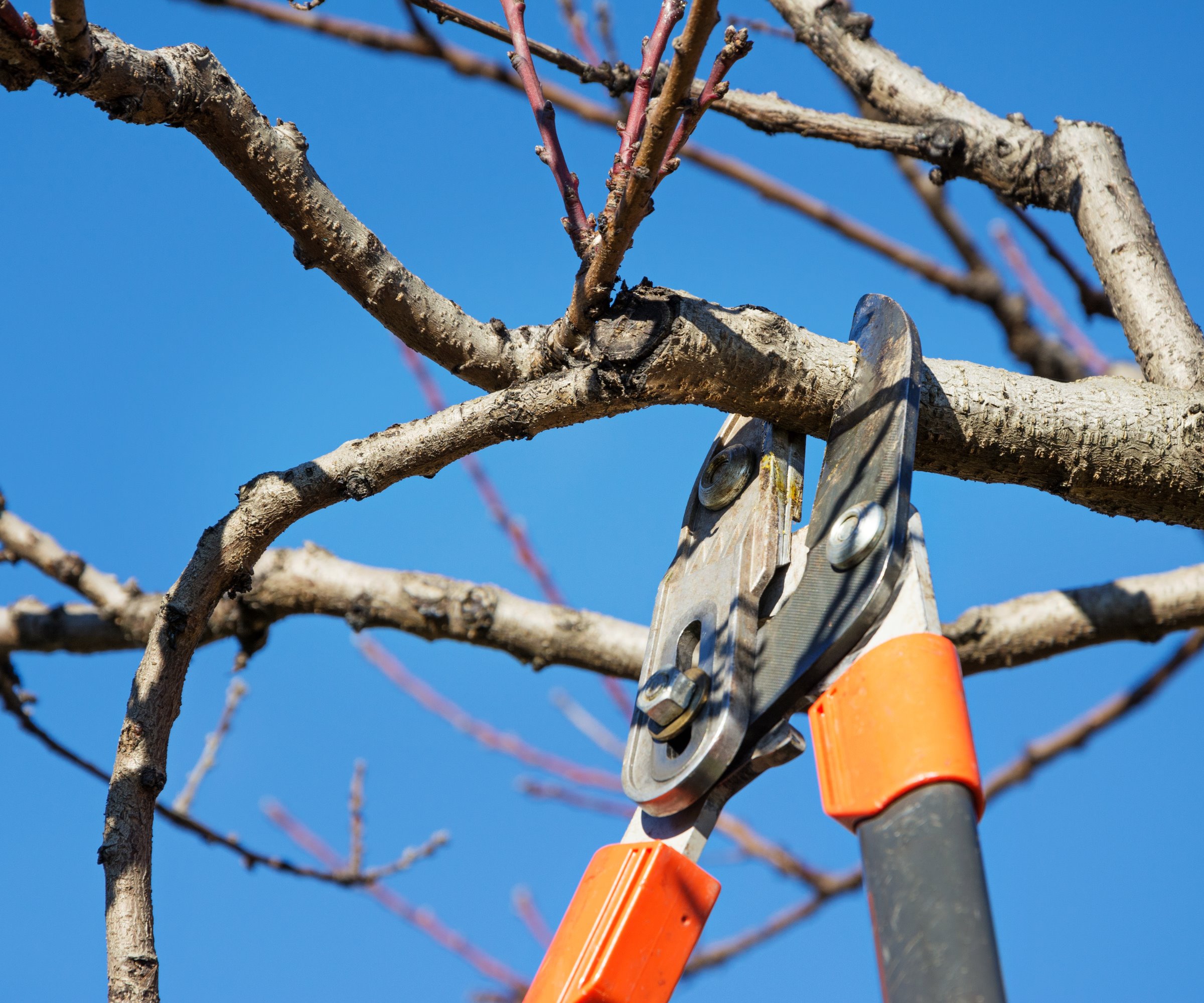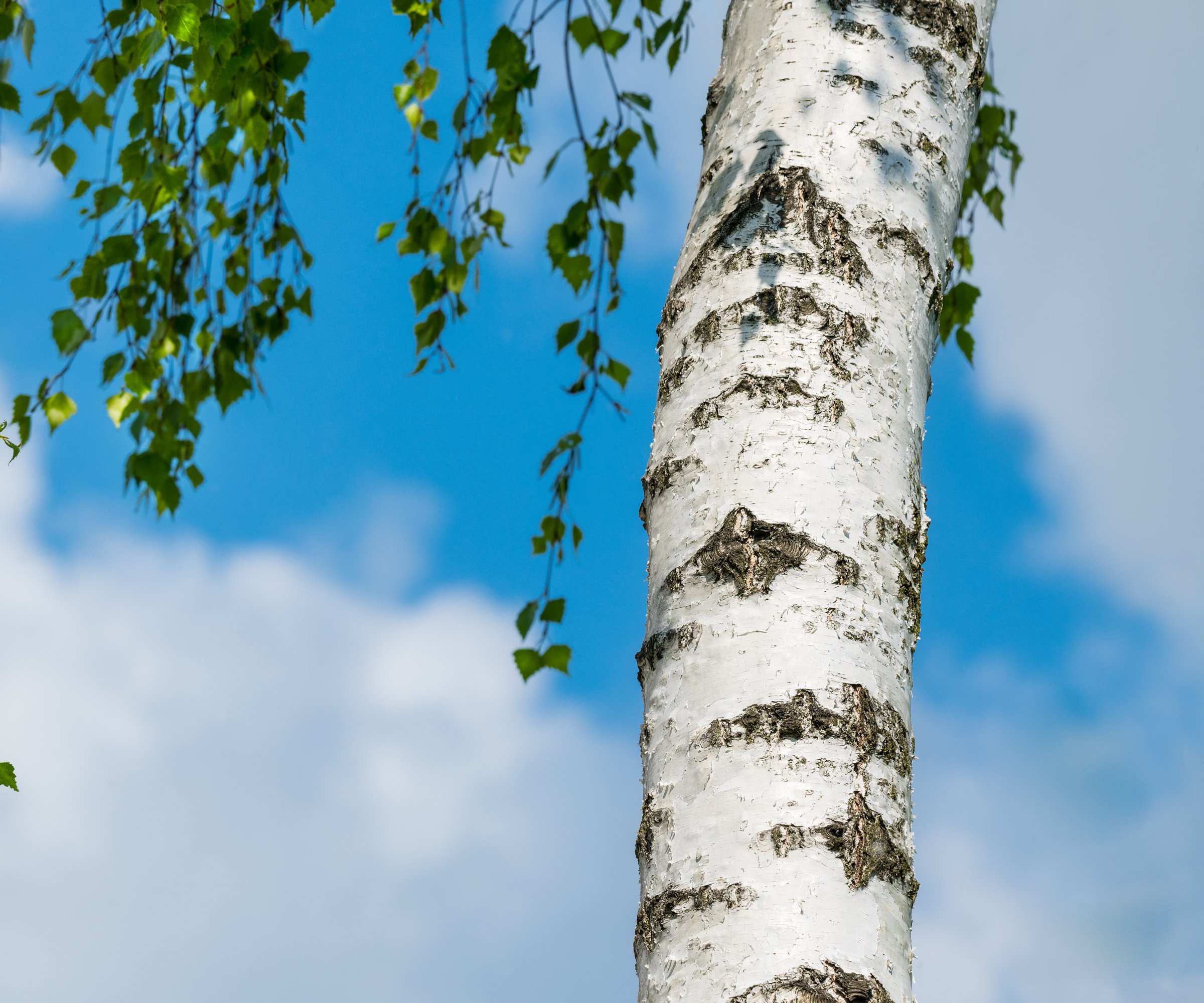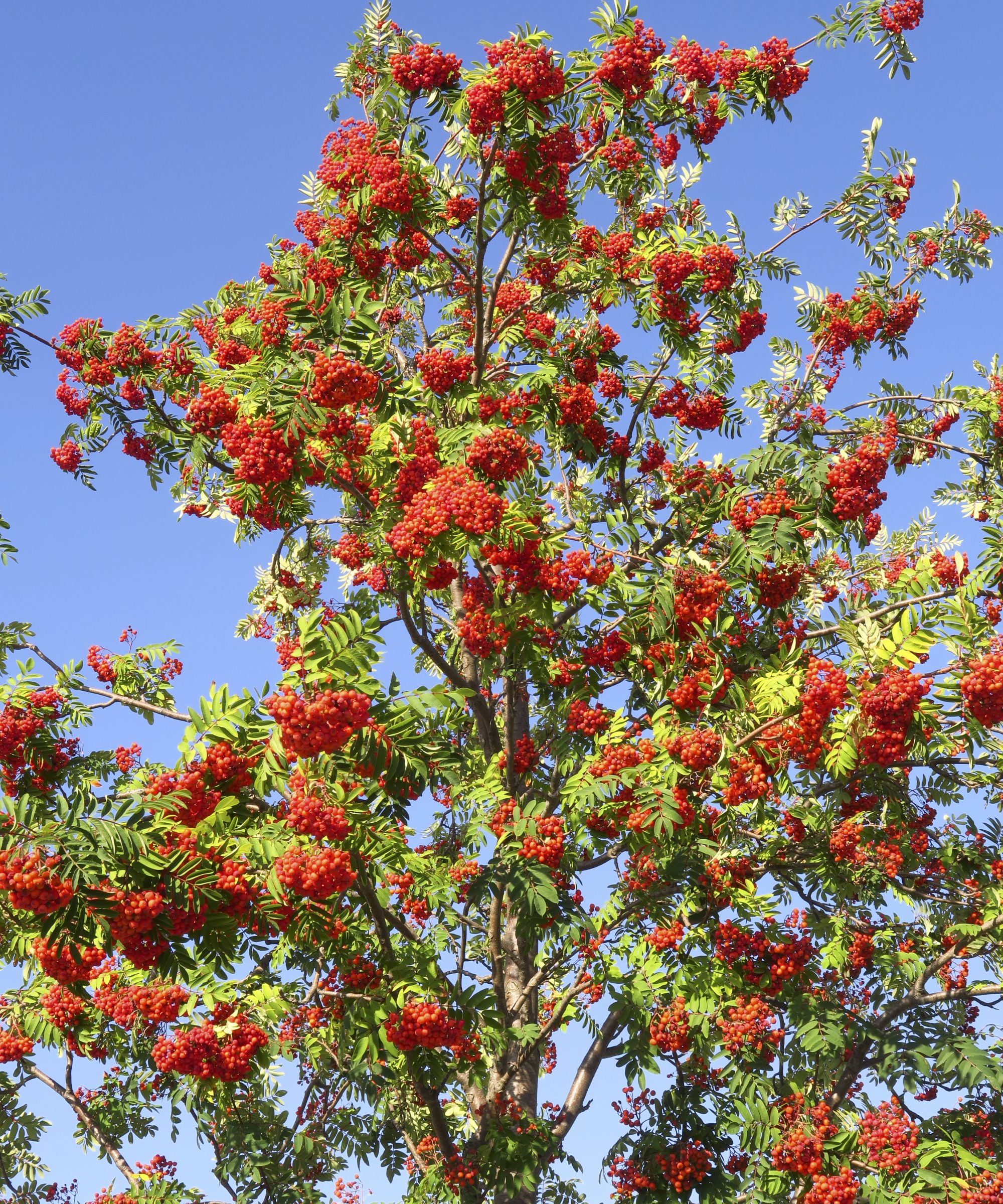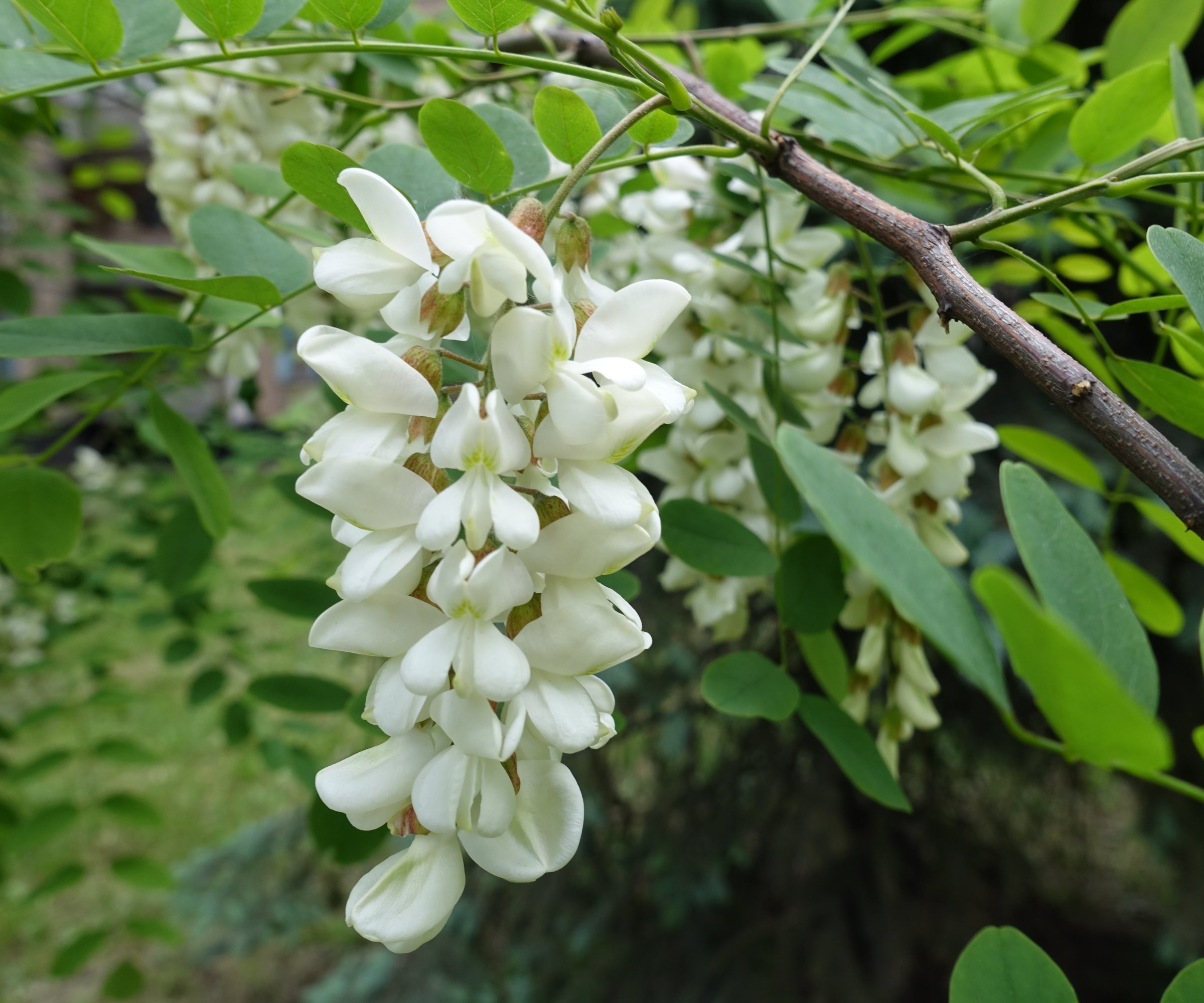7 trees to prune in October – and how much to remove
Discover some of the trees that you can safely prune this month in your garden


Trees are very low maintenance additions to any garden and, with such a huge range to choose from, there can be a tree suitable for any backyard ideas. Every garden can benefit from a tree and their uses range from adding height and structure to a space, to using trees for privacy and screening in a backyard.
Many trees will require little maintenance or pruning each year. However, there will be times when they need pruning for shape, to control their size, or for safety reasons.
Lots of trees benefit from being pruned in late winter or early spring, when they are dormant, but there are some species that can be cut back in October. Some can be pruned hard in October, while others should only be given a light trim.

Trees start to lose their leaves and enter dormancy during October
Ideal trees to prune in October – and the tools you need
Small scale pruning of deciduous and evergreen trees at home can be done with simple garden tools such as pruning shears, loppers or a pruning saw. But it is always best to leave large pruning jobs to the professionals. It is important to use sharp and clean garden tools when doing any pruning, to make clean cuts and reduce the risk of diseases. A combination kit of loppers, pruners, and shears, such as this one at Amazon, can be ideal for a range of garden tasks, including pruning trees in fall. Let's take a closer look at 7 trees that can be pruned this month.
1. Birch

Silver birch trees are much-loved for their decorative bark
Birch trees are hugely popular for their peeling bark. When it comes to the silver birch, they are one of the best trees with white bark that you can add into your yard - though admittedly different birches have stunning bark of many shades.
Fall is the ideal time to prune birch trees as they can bleed lots of sap if they are pruned in winter. By pruning in late summer or early fall you can reduce the risk of this bleeding, which weakens the tree and can attract pests that potentially harbour disease.
While established birches tend to not need lots of pruning, and hard pruning is not recommended, the trees can be pruned to remove dead, diseased, and damaged branches.
Design expertise in your inbox – from inspiring decorating ideas and beautiful celebrity homes to practical gardening advice and shopping round-ups.
2. Hornbeam

Hornbeam is a deciduous tree with serrated leaves
Hornbeam is a popular deciduous tree that is very versatile. It's ideal for hedges, or as a tree to espalier. If you have hornbeam as a privacy hedge, it is best to have those hedges pruned by the end of September. However, hornbeams that are grown as trees can be pruned from October throughout winter.
While a hornbeam does not tend to require much pruning, small-scale cutting to remove dead or diseased branches, or to gently shape the tree, can be done in October.
In addition, any major renovation pruning is best done between October and March. An example of such pruning is that hornbeams can be pollarded or coppiced, as the tree has a fantastic ability to regenerate after they have been cut.
3. Catalpa

Catalpa is also known as the Indian Bean Tree
Catalpa trees are fantastic ornamental additions and are a great option for a low maintenance tree for a backyard. As well as being a fast growing flowering tree, they are also very good trees for shade. However, they can grow very tall if left to their own devices, and are another that are regularly coppiced or pollarded.
Catalpa trees can recover well from pruning and the best time to prune them is in fall or winter. Whether it is gently pruning to keep the tree in shape, removing dead or damaged branches, or more major work to keep the tree small and ideal for limited space, this work can be done from late October onwards.
4. Yew

Yews are evergreen trees that have needle-like leaves
Yew trees are pruned from the end of summer into early fall, so October is one of the last chances to cut these popular trees. Whether you are growing yew as a front yard hedge, or as a larger columnar tree, regular pruning is required to keep the growth short. Giving it a prune in early October means the tree can have time to recover and harden off before winter arrives and they go dormant.
Yews are slow-growing and can be kept neat with a regular clip, however you should refrain from ever taking too much growth off in one go. Taking over a third of the length can send the tree into shock, which will affect its productivity and also leave the tree more at risk of pests and diseases.
5. Sorbus

Sorbus are well-known for their fall berries
Sorbus are a fantastic addition to the garden as trees for fall color, and can be safely pruned in October.
Pruning to make large renovations, including thinning the crown or removing branches to improve the shape, can be done from October to February. Removing damaged wood, or crossing branches, can also be done at any time throughout the tree’s dormancy period. A pruning saw, such as this Corona Tools 10-Inch RazorTOOTH Folding Saw available at Amazon, will be essential to get through thicker branches if you are doing larger pruning work.
Sorbus is another tree that will bleed sap profusely if they are pruned during their growing season.
6. Japanese maple

Japanese maples are beautiful and colorful trees
Japanese maple trees do not tend to need much pruning, but they can start to be cut at the end of October. In the latter end of fall, the trees begin to go dormant and, if you reach for the pruning shears in late October, that will mean they will not bleed as much sap as they would if pruned in spring or summer.
In reality, you do not want to prune Japanese maples much each year, as part of their popularity is the natural shapes they form. A light trim each year, or even every other year, can be beneficial to form the shape of the tree. If you are planning for when to prune Japanese maple trees to tweak their shape, then do it only once a year at a minimum, though dead or damaged wood can be removed at any time.
7. Robinia

The branches of Robinia trees have very sharp thorns
Robinia, also known as the False Acacia or Black Locust, is native to North America and can become very large in height. The tree is best pruned in late summer or early fall to prevent the pruning cuts bleeding sap. Robinia branches are brittle and commonly damaged by strong winds, so any damaged or dead wood will need pruning out. And, as the plant is often regarded as an invasive species, it is important to prune out suckers in the fall.
You can prune robinia to keep it compact and more suited to a smaller backyard, however, it is recommended to cut with care as the tree has sharp thorns. Thick gloves and long sleeves are recommended if you are planning to tackle this tree.
FAQs
Can you trim oak trees in October?
October is not an ideal time to prune oak trees, which are better cut in late winter or early spring. Pruning at this time reduces the amount of pests that can be attracted to the pruning wounds and potentially bring with them diseases that could harm the tree.
Can you prune apple trees in October?
The best time to prune an apple tree is between November and March, when the trees are dormant and after the leaves have dropped. Whether grown as full mature trees, or trained in restricted forms, winter is an ideal time to prune both standard and espalier apple trees.
Can I prune my fig tree in October?
If you are growing fig trees, the ideal time to prune comes in late winter or early spring. You want to prune fig trees when they are dormant, so they don't bleed lots of sap, and timing the pruning in February or March can prevent frosts damaging the pruning wounds.
October is generally the time to cut deciduous trees and not the ideal time to prune fruit trees. It is vital to make sure you prune fruit trees at the right time. Getting the timing wrong is a potentially harmful pruning mistake that can damage the health of a tree and impact any crop you are going to get.

Drew has worked as a writer since 2008 and was also a professional gardener for many years. As a trained horticulturist, he worked in prestigious historic gardens, including Hanbury Hall and the world-famous Hidcote Manor Garden. He also spent time as a specialist kitchen gardener at Soho Farmhouse and Netherby Hall, where he grew vegetables, fruit, herbs, and cut flowers for restaurants. Drew has written for numerous print and online publications and is an allotment holder and garden blogger. He is shortlisted for the Digital Gardening Writer of the Year at the 2025 Garden Media Guild Awards.